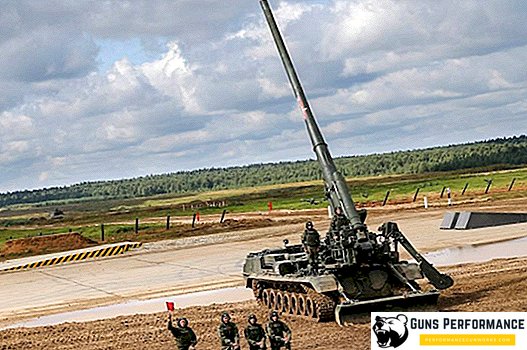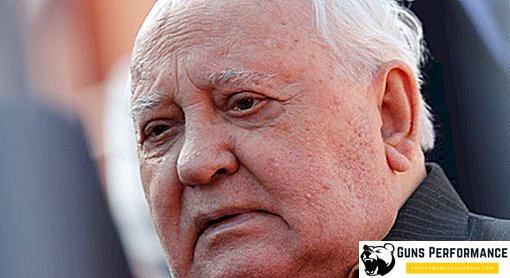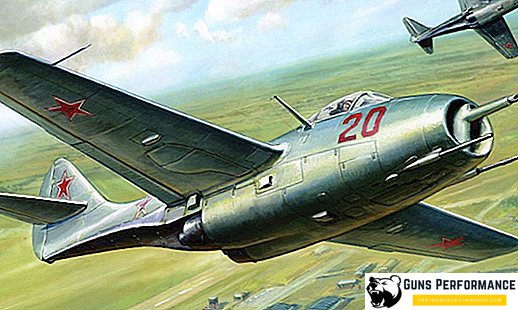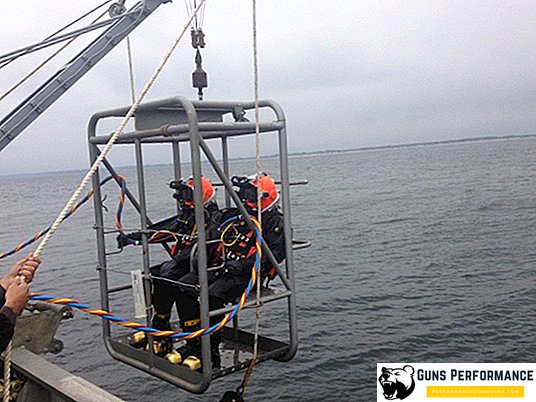The IL-86 is a wide-body, medium-haul passenger aircraft, developed by the Ilyushin development bureau. Currently practically not used.
Overview of the aircraft and its technical characteristics
Aerodynamically, the IL-86 is a low-profile, normal-swept-wing low-profile aircraft. Plumage liner - one-chin. The main landing gear has a tricycle scheme. In this case, the side landing gear attached to the wing, and the middle - to the fuselage. Also worth special mention is the design of the main landing gear liner IL-86. They have four-wheeled carts, equipped in this way specifically for a uniform load on the runway. The power plant of the aircraft is represented by 4 NK-86 turbojet engines located under the wing.

Flight specifications of IL-86:
- Crew: 3-4 people.
- Passenger capacity of the cabin:
- Three-class layout: 314
- Two-class layout: 234
- Single Class Layout: 350
- Load capacity: 42 t
- Length: 59.94 m
- Wing Span: 48.1 m
- Height: 15.81 m
- Wing area: 320 m2
- Weight curb: 111.5 t
- Maximum take-off weight: 215 t
- The mass of fuel in the internal tanks: 113 950 kg
- Powerplant: 4 × TRDD NK-86
- Thrust: 4 × 13 000 kgf
- Auxiliary power unit: 1 × GTE VSU-10
- Cruising speed: 950 km / h
- Practical range: 3800 km (maximum take-off weight)
- Practical ceiling: 12,000 m
The history of the creation of IL-86 and its operation
In the late 1960s, in Soviet civil aviation, it became necessary to obtain a medium-range wide-body airliner that could carry up to 250 people. This need became most felt in 1967, when the decision of the Council of Ministers of the USSR to develop the aircraft was issued.
Initially, Ilyushin’s experimental design bureau decided to modify the IL-62 intercontinental passenger liner, bringing its passenger capacity to 250 people. This project was named IL-62-250, however, due to possible flaws in the design of the future liner, caused by lengthening its fuselage and changing its centering, it was soon closed. Thus, it was decided to develop a fundamentally new passenger aircraft.

In the development of the liner, soon received the designation IL-86, considered several options for the layout and design of the passenger compartment and the crew cabin. Thus, a double-deck fuselage structure was developed, as well as a single-deck structure with an oval fuselage section. However, these options would seriously affect the aerodynamic characteristics of the liner and lead to its worse handling.
As a result, a wide-body aircraft was developed, having nine seats in the economy class cabin, divided into three rows and having two fairly wide aisles. The passenger capacity of the IL-86 at the same time was 350 people, which for domestic aviation was an indicator unprecedented until now.
By 1976, the development of passenger aircraft IL-86 was completed, and at the end of the same year, the car made its first flight. After that, first the factory and then certification tests of the liner began, but its mass production began in the 76th.
In December 1980, begins commercial operation of the IL-86. In the 1980s, the liner successfully made commercial flights, and its new modifications were actively developed, in particular, providing for the replacement of its engines. However, in the 90s began its decline. This was mainly due to the high noise level of the engines, as well as their uneconomical nature, so that not all private airlines could “pull” the IL-86.
Also, the reason for the rapid decline of this passenger liner was the fact that at the same time, foreign aircraft of the Boeing and Airbus companies flooded into the Russian market, which were much cheaper for the price and operation. Unable to withstand this fierce competition, at the beginning of the 2000s, the IL-86 began to gradually be withdrawn from commercial operation. The final point in the history of this airliner was set in 2010-2011, when the last passenger IL-86 was removed from flights and cut.
At present, 4 IL-86VKPs are in operation (they are IL-80).

Modifications IL-86
In total, 4 modifications of IL-86 were developed or were in serial production.
- IL-86 is a basic modification of the liner, designed to carry up to 350 passengers.
- The Il-86V is a modification of the Il-86 aircraft with increased passenger capacity (up to 450 people) and a flight range of 3500-4000 kilometers. Was in development, was not launched into mass production.
- IL-86D - a further modification of the IL-86 with a modified fuselage design, which became the basis for the IL-96. Not produced.
- IL-80 (IL-87) - aircraft converted to an air command center. Externally, it differs from the IL-86 by the absence of portholes, as well as by the characteristic "hump" (hardware compartment) in the bow. Also found another symbol: IL-86VKP.
The advantages and disadvantages of the aircraft
The main advantage of the IL-86 is that it was the first wide-body passenger aircraft in the USSR, which also had unprecedented passenger capacity. It was thanks to this that the problem of passenger air transport over medium distances was solved and the basis for their popularization was created. It is also worth noting that the design of the IL-86 was used a number of innovations, such as, for example, an improved system of onboard electronics, as well as a new layout of the passenger compartment. All this later came in handy when designing the younger brother of the IL-86, the IL-96 aircraft, as well as other aircraft.
Another important advantage of the passenger aircraft IL-86 is its high reliability. For more than 30 years of commercial operation, the aircraft transported tens of thousands of passengers, but none of the passengers died. Yes, of the 106 aircraft released by August 2002, only four were lost, but 22 people were killed while they were members of the IL-86 crew. So lost liners were less than four percent of the total.

As for the shortcomings of the IL-86, the main one is the relatively low power of its engines. Thanks to this feature, as well as the high take-off mass of the aircraft, among the pilots of civil aviation there was even a comic opinion, "that, they say, the IL-86 takes off only thanks to the roundness of the Earth." In part, this statement is true, since taking off the IL-86 requires a somewhat longer runway length, which in itself excludes the possibility of using it for some airports. At the same time, the reverse of the engines is also rather weak, therefore the landing of the IL-86 requires a greater mileage.
One of the serious shortcomings of this passenger liner is the high noise level of its engines. This was the main reason for the rapid "fading" of the IL-86 as a passenger liner in the post-Soviet space. The fact is that the noise level of the IL-86 engines clearly did not meet international standards. In this regard, by 2011 it was almost impossible to meet this aircraft in service.
Conclusion
Despite all its flaws, which led to a relatively rapid "completion of a career" in passenger air travel, the IL-86 left a noticeable mark in the history of civil aviation not only in the countries of the former USSR, but also in world aviation. So, this plane left an invariably good impression of itself, helping to raise the prestige of the Soviet Union, and also became a real step forward in the design of passenger aircraft.












